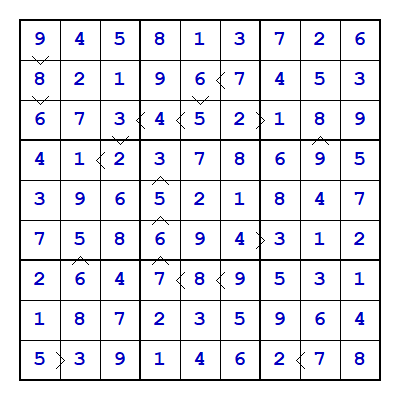A Sudoshiki puzzle here is assumed to be a Futoshiki puzzle on a standard Sudoku grid (eg: 9 3x3 regions, 8 2x4 regions, 6 2x3 regions, etc).
Since clues can be in two forms - givens and relationships - a puzzle has 3 basic attributes:
- N - the grid size
- G - the number of givens
- R - the number of relationship clues (<, >)
A puzzle, FP(N, G, R) or SI(N, G, R) (SI for Sudoshiki, aka Sudoku Inequality) is minimal if removal of any given or relationship causes the puzzle to have multiple solutions.
My primary interest is in puzzles with G = 0, but I will in time take a look at puzzles with G > 0.
Searching for minimal cases is a time-consuming business, so my results for N > 5 are by no means definitive, but here they are:
- Code: Select all
Minimal Futoshiki/Sudoshiki (no givens)
N R(FP) R(SI)
-----------------------
4 4 3
5 6
6 9 8
7 15
8 24 19
9 36 27
If anybody is aware of any examples of smaller R I'd be glad to hear from you, of course!


